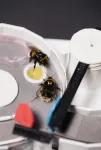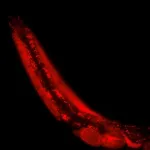(Press-News.org) TAMPA, Fla. — An international interdisciplinary team of researchers, including Moffitt Cancer Center’s Tiffany Carson, Ph.D., has been selected to receive a Cancer Grand Challenges award. Co-founded by the National Cancer Institute and Cancer Research UK, Cancer Grand Challenges supports a community of diverse, global teams to come together, think differently and take on some of cancer’s toughest challenges.
Carson is part of the SAMBAI (Societal, Ancestry, Molecular and Biological Analyses of Inequalities) team led by Melissa Davis, Ph.D., from Morehouse School of Medicine. The team will receive up to $25 million over the next five years to develop novel approaches to addressing cancer inequities.
Inequities in cancer prevention, screening and treatment lead to disparities in cancer incidence and mortality and are a major public health concern. The SAMBAI team aims to build an unprecedented resource, which will comprise a comprehensive measurement of social, environmental, genetic and biological factors that can be used to help define the causes of disparate outcomes in the selected populations. The team will focus on prostate, breast and pancreatic cancers spanning diverse cohorts of African descent from regions of Africa, the UK and the U.S.
“We are honored to have Dr. Carson and other Moffitt investigators contribute to the stellar transdisciplinary SAMBAI team. This initiative is an outstanding example of Moffitt’s deep commitment to fostering scientific collaboration to advance cancer health equity at the local, national and international level,” said Susan Vadaparampil, Ph.D., M.P.H., associate center director of Community Outreach, Engagement and Equity and interim associate center director of Population Science.
The SAMBAI team is comprised of clinicians, advocates and scientists across 15 institutions and four countries. It is one of five new Cancer Grand Challenges teams announced today.
“Together with our network of visionary partners and research leaders, Cancer Grand Challenges unites the world’s brightest minds across boundaries and disciplines and aims to overcome cancer’s toughest problems,” said David Scott, Ph.D., director of Cancer Grand Challenges. “With this investment, our largest to date, we continue to grow our global research community and fund new teams that have the potential to surface discoveries that could positively impact cancer outcomes.”
About Moffitt Cancer Center
Moffitt is dedicated to one lifesaving mission: to contribute to the prevention and cure of cancer. The Tampa-based facility is one of only 56 National Cancer Institute-designated Comprehensive Cancer Centers, a distinction that recognizes Moffitt’s scientific excellence, multidisciplinary research, and robust training and education. Moffitt’s expert nursing staff is recognized by the American Nurses Credentialing Center with Magnet® status, its highest distinction. With more than 9,000 team members, Moffitt has an economic impact in the state of $2.4 billion. For more information, call 1-888-MOFFITT (1-888-663-3488), visit MOFFITT.org, and follow the momentum on Facebook, Twitter, Instagram and YouTube.
###
END
Cancer Grand Challenges has selected five new global research teams that will address the following challenges in cancer: reducing cancer inequities, understanding the mechanisms of early-onset cancers, developing drugs for solid tumors in children, and broadening our knowledge about how T cells recognize cancer cells. The winning teams were announced at the Cancer Grand Challenges Summit on March 6, 2024, in London.
Cancer Grand Challenges is a global funding initiative cofounded in 2020 by the National Cancer Institute (NCI), ...
The team is co-led by Martin Eilers, Chair of Biochemistry and Molecular Biology at the University of Würzburg (JMU). “Our research project is called KOODAC,” he explains. “That stands for ‘Knocking-Out Oncogenic Drivers and Curing Childhood Cancer’”. Our goal is to develop well-tolerated drugs that can target and eliminate cancer cells in children.” The current standard of care for childhood cancer is chemotherapy and radiation therapy, which, even when successful, are associated with severe side effects. “These ...
ITHACA, N.Y. – Cornell University researchers have developed a semiconductor chip that will enable ever-smaller devices to operate at the higher frequencies needed for future 6G communication technology.
The next generation of wireless communication not only requires greater bandwidth at higher frequencies – it also needs a little extra time. The new chip adds a necessary time delay so signals sent across multiple arrays can align at a single point in space-- without disintegrating.
The team’s paper, ...
About The Study: The results of this study using twin data support an association between adverse childhood experiences and poor mental health in adulthood, notwithstanding evidence for familial confounding from shared genetic and environmental factors. These findings suggest that targeted interventions may be associated with reduced risks of future psychopathology.
Authors: Hilda Björk Daníelsdóttir, M.Sc., of the University of Iceland in Reykjavík, Iceland, is the corresponding author.
To access the embargoed ...
About The Study: The findings of this study suggest that pediatric atopic dermatitis (AD) was generally associated with greater odds of reported difficulties in learning and memory. However, this association was primarily limited to children with neurodevelopmental comorbidities, such as attention-deficit/hyperactivity disorder or learning disabilities. These results may improve the risk stratification of children with AD for cognitive impairments and suggest that evaluation for cognitive difficulties should be prioritized among children with AD and neurodevelopmental disorders.
Authors: Joy ...
A research team led by the Paul Scherrer Institute has spectroscopically observed fractionalisation of electronic charge in an iron-based metallic ferromagnet. Experimental observation of the phenomenon is not only of fundamental importance. Since it appears in an alloy of common metals at accessible temperatures, it holds potential for future exploitation in electronic devices. The discovery is published in the journal Nature.
Basic quantum mechanics tells us that the fundamental unit of charge is unbreakable: the electron charge is quantised. Yet, we have come to understand that exceptions exist. In some situations, ...
In a groundbreaking discovery, bumblebees have been shown to possess a previously unseen level of cognitive sophistication. A new study, published in Nature, reveals that these fuzzy pollinators can learn complex, multi-step tasks through social interaction, even if they cannot figure them out on their own. This challenges the long-held belief that such advanced social learning is unique to humans, and even hints at the presence of key elements of cumulative culture in these insects.
Led by Dr Alice Bridges and Professor Lars Chittka , the research team designed a two-step puzzle box requiring ...
A research team has examined the link between adverse childhood experiences and the risk of mental health problems later in life, according to a study in JAMA Psychiatry. The researchers from Karolinska Institutet and University of Iceland have found that the risk of suffering from mental illness later in life among those experiencing significant adversity in childhood can be partly explained by factors shared by family members, such as genetics and environment.
Several previous studies have shown that people who have experienced ...
Some of our genes can be expressed or silenced depending on whether we inherited them from our mother or our father. The mechanism behind this phenomenon, known as genomic imprinting, is determined by DNA modifications during egg and sperm production. The Burga Lab at the Institute of Molecular Biotechnology (IMBA) of the Austrian Academy of Sciences uncovered a novel gene regulation process, associated with the silencing of selfish genes, that could represent the first step in the evolution of imprinting. Their discovery, reported in Nature, ...
One of the fundamental goals of basic biology is understanding how diverse cell types work in concert to form tissues, organs, and organ systems. Recent efforts to catalog the different cell types in every tissue in our bodies are a step in the right direction, but only one piece of the puzzle. The great mystery of how those cells communicate with one another remains unsolved.
Now, a new paper in Nature describes uLIPSTIC, a tool capable of laying the groundwork for a dynamic map tracking the physical interactions between different cells—the elusive cellular interactome. The authors have been perfecting the technology since 2018 and the latest iteration ...




